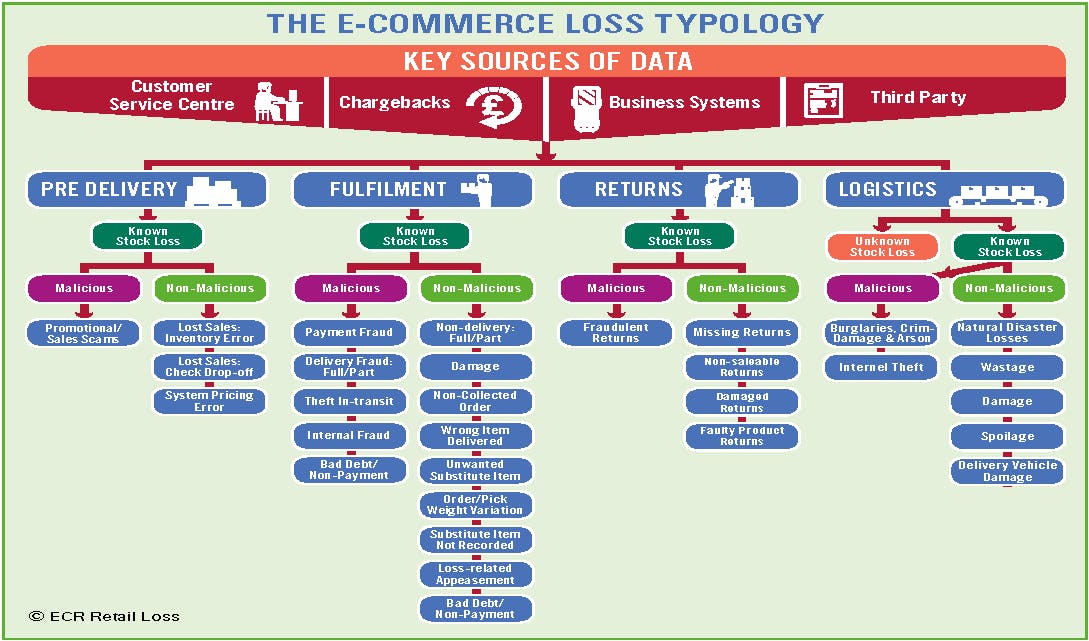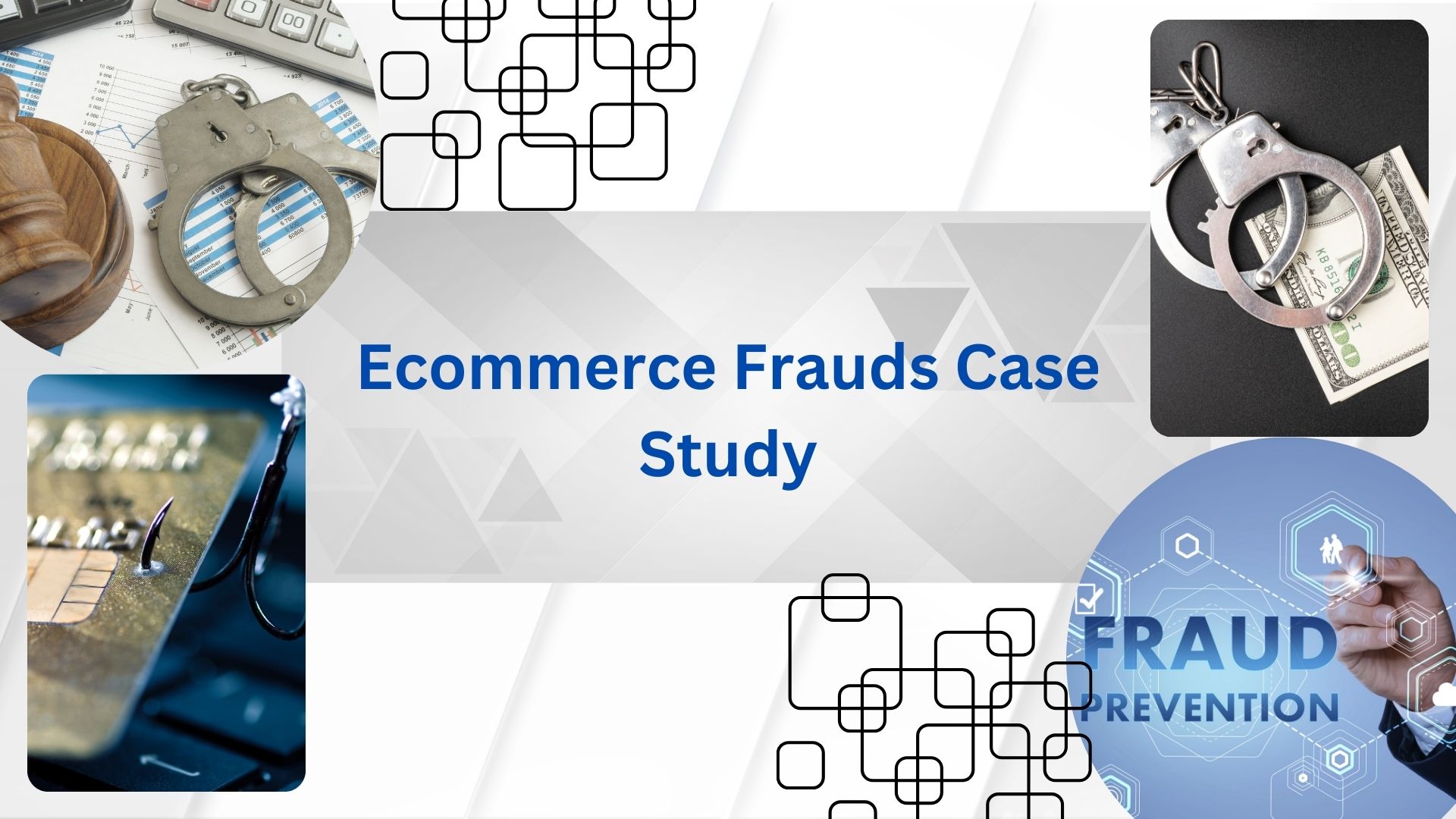Ecommerce frauds case studies reveal the prevalence of online scams and highlight the need for robust security measures to protect consumers and businesses. In 2019, a major ecommerce platform faced a large-scale fraud where hackers breached customer accounts and made unauthorized purchases, resulting in financial losses and damaged reputation.
This incident underscores the importance of implementing advanced authentication methods, monitoring suspicious activities, and educating customers about online security best practices. As ecommerce continues to thrive, staying ahead of fraudsters is crucial for sustaining trust and confidence in the digital marketplace.
Through proactive measures and collaboration with cybersecurity experts, businesses can mitigate the risks associated with ecommerce frauds and safeguard the integrity of online transactions.

Credit: www.ecrloss.com
Case Study 1: Phishing Attacks
Phishing attacks are a prevalent form of e-commerce fraud, wherein fraudsters use deceptive tactics to trick individuals into revealing sensitive information such as login credentials, payment details, or personal information. These attacks often occur through email, fake websites, or text messages, creating a facade of legitimacy to deceive unsuspecting victims.
Definition Of Phishing Attacks
Phishing attacks involve the use of fraudulent communication tactics to manipulate individuals into providing sensitive data, often by impersonating reputable entities. Fraudsters utilize social engineering techniques to create a sense of urgency or trust, prompting recipients to divulge confidential information.
Methods Used By Fraudsters
- Creating counterfeit websites resembling legitimate businesses
- Sending deceptive emails with fake offers or urgent requests
- Impersonating trusted organizations to elicit personal data
Real-life Examples
An infamous example of a phishing attack is the “PayPal” scam, where fraudsters send emails posing as PayPal and requesting users to verify their account information through a fraudulent link. Similarly, “banking” phishing attacks involve fake emails claiming an urgent need for account verification, leading recipients to provide sensitive banking details.
Consequences And Lessons Learned
The ramifications of falling victim to phishing attacks can be severe, encompassing financial losses, identity theft, and compromised personal data. By educating individuals about the red flags associated with phishing attempts and implementing robust security protocols, e-commerce entities can mitigate the risk of such fraudulent activities.
Case Study 2: Fake Websites
Discover how ecommerce fraudsters create fake websites to deceive unsuspecting customers in this case study. Explore the tactics used, real-life examples, and learn how to protect yourself from falling prey to such scams.
Creation And Operation Of Fake Websites
Fraudulent entities often set up seemingly legitimate e-commerce websites to deceive unsuspecting consumers. These fake websites are designed to mimic well-known brands or offer enticing deals to lure in potential victims. Typically, scammers utilize sophisticated techniques to make their websites appear genuine, complete with professional layouts, logos, and product images that closely resemble the authentic brand.
How Consumers Get Trapped
Once an unsuspecting consumer lands on the fake website, they may be enticed by heavily discounted prices or limited-time offers on popular products. In some cases, scammers may also employ aggressive marketing tactics, such as targeted ads on social media or search engines, to drive traffic to these counterfeit e-commerce platforms. This can lead consumers to believe that they are making a genuine purchase, only to realize they have fallen victim to a scam.
Investigation And Prosecution
The investigation of fake websites involves intricate digital forensic analysis and collaboration between law enforcement agencies, cybersecurity experts, and legal authorities. Through tracing IP addresses, financial transactions, and digital footprints, investigators work to uncover the identities of the perpetrators behind these fraudulent websites. Once sufficient evidence is gathered, law enforcement agencies can pursue legal action and prosecution against the individuals responsible for perpetrating e-commerce fraud through fake websites.
Prevention Measures
Given the prevalence of fake websites in e-commerce fraud cases, consumers are advised to exercise caution when making online purchases. Verifying the legitimacy of a website by checking for secure connections (HTTPS), verifying contact information, and reading reviews from other buyers can help individuals discern the authenticity of an e-commerce platform. Furthermore, organizations and regulatory bodies continue to implement stricter regulations and enhanced security protocols to combat the proliferation of counterfeit websites and protect consumers from falling victim to online scams.
Case Study 3: Payment Processor Fraud
This case study delves into the intricacies of payment processor fraud, shedding light on the challenges faced by ecommerce businesses in combating fraudulent activities. Explore real-life examples and gain actionable insights to protect your online store from financial loss.
Payment processor fraud is a serious concern for e-commerce businesses. In this case study, we will explore the overview of payment processor fraud, the popular techniques employed by fraudsters, notable cases, and effective prevention measures.
Overview Of Payment Processor Fraud
Payment processor fraud involves deceptive activities carried out by individuals or groups who exploit weaknesses in the payment processing system to steal money or sensitive information. These fraudsters often target online merchants and their customers, causing substantial financial losses and reputational damage.
Popular Techniques Employed
Fraudsters employ a variety of techniques to execute payment processor fraud. They capitalize on vulnerabilities within the system to gain unauthorized access or manipulate transactions. Some of the popular techniques include:
- Payment Relay Attack: This involves intercepting the communication between the merchant and the payment processor to divert funds to a fraudulent account.
- Chargeback Fraud: In this technique, fraudsters make a legitimate purchase using a credit card and then file a false chargeback request, leading to a refund while retaining the purchased merchandise.
- Identity Theft: By stealing personal information of individuals, fraudsters can create fake accounts or impersonate legitimate customers to process fraudulent transactions.
- Phishing Attacks: Fraudsters use techniques like email or website spoofing to trick users into revealing their login credentials or other sensitive information, which can be used for fraudulent transactions.
Notable Cases
Several high-profile cases of payment processor fraud have made headlines, underscoring the need for heightened security measures. One such notable case is the infamous Target data breach that occurred in 2013. Hackers gained access to the retailer’s payment processing system, compromising the financial information of millions of customers. This breach resulted in significant financial losses and damaged Target’s reputation.
Preventing Payment Processor Frauds
Preventing payment processor fraud requires a multi-layered approach, combining technological solutions with strict policies and user awareness. Some effective prevention measures include:
- Implementing robust fraud detection and prevention systems that can identify suspicious transactions in real-time.
- Enforcing secure payment processing protocols, such as end-to-end encryption, tokenization, and secure socket layer (SSL) certificates.
- Regularly monitoring and auditing transactional data to identify any anomalies or suspicious patterns.
- Providing comprehensive training and awareness programs to employees and customers to minimize the risks of falling prey to phishing attacks or scams.
- Establishing strong partnerships with reputable payment processors that prioritize security and implement advanced fraud prevention technologies.
By adopting these preventive measures, e-commerce businesses can safeguard themselves and their customers against payment processor fraud, thereby protecting their reputation and financial well-being.

Credit: fastercapital.com

Credit: fastercapital.com
Frequently Asked Questions For Ecommerce Frauds Case Study
What Are The Most Common Types Of Ecommerce Frauds?
Ecommerce frauds can take various forms, including identity theft, chargeback fraud, and account takeover. Identity theft involves stealing someone’s personal information to make unauthorized purchases. Chargeback fraud occurs when a customer disputes a legitimate transaction to receive a refund. Account takeover happens when fraudsters gain access to an individual’s ecommerce account to make unauthorized transactions.
How Can I Protect My Ecommerce Business From Fraud?
To protect your ecommerce business from fraud, you can employ several measures. Implement robust identity verification systems, monitor for suspicious activities, use fraud detection tools, require strong passwords and two-factor authentication, and regularly update your security software. Educate employees about fraud prevention and establish strict policies for handling fraudulent activities.
What Steps Should Customers Take To Avoid Falling Victim To Ecommerce Fraud?
Customers can take several steps to avoid becoming victims of ecommerce fraud. They should only shop from secure and reputable websites, avoid sharing personal information with suspicious sources, regularly monitor their financial statements, use strong and unique passwords, and be cautious of phishing emails and fake online advertisements.
Additionally, using reputable payment methods and keeping software updated can also enhance protection against fraud.
Can Ecommerce Frauds Be Completely Eliminated?
While it is difficult to completely eliminate ecommerce fraud, businesses and customers can take proactive measures to minimize the risk. By implementing effective fraud prevention systems, staying updated on the latest fraud techniques, and promoting awareness among customers, the incidence of fraud can be significantly reduced.
It is an ongoing process that requires constant vigilance and adaptation to new fraud tactics.
Conclusion
This ecommerce fraud case study serves as a cautionary tale for online shoppers. It highlights the importance of being vigilant and practicing due diligence when making purchases online. By understanding common fraud tactics and taking necessary precautions, consumers can better protect themselves against online scams.
Ecommerce platforms and authorities also have a crucial role to play in ensuring a safe and secure online shopping experience for everyone. Stay informed, be proactive, and stay safe in the world of ecommerce.

Monica M. Watkins stands as a prominent authority in the realm of investment, recognized for her expertise as a “how-to” invest expert. With a robust background in finance and a keen understanding of market dynamics, Monica M. Watkins has become a trusted source for practical insights on investment strategies. Her career is characterized by a commitment to demystifying the complexities of financial markets and offering actionable guidance to both novice and seasoned investors. Whether unraveling the intricacies of stock market trends, providing tips on portfolio diversification, or offering guidance on risk management, Monica M. Watkins’s expertise spans a wide spectrum of investment-related topics. As a “how-to” invest expert, she empowers individuals with the knowledge and tools needed to navigate the ever-changing landscape of investments, translating complex financial concepts into accessible and actionable advice. Monica M. Watkins continues to be a guiding force for those seeking to make informed and strategic investment decisions, contributing significantly to the broader discourse on wealth-building and financial success.


